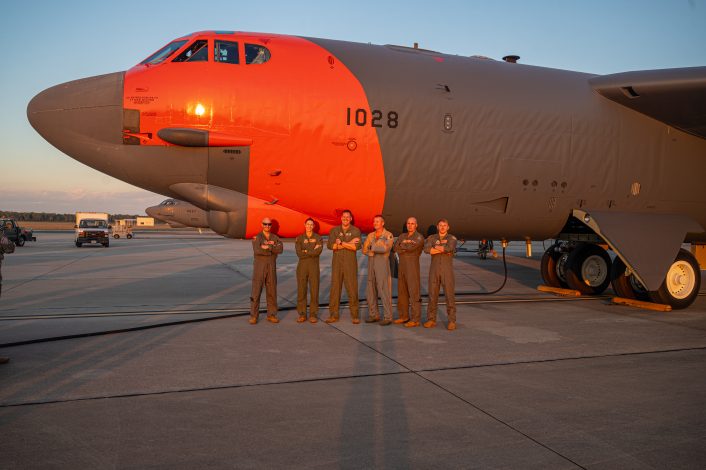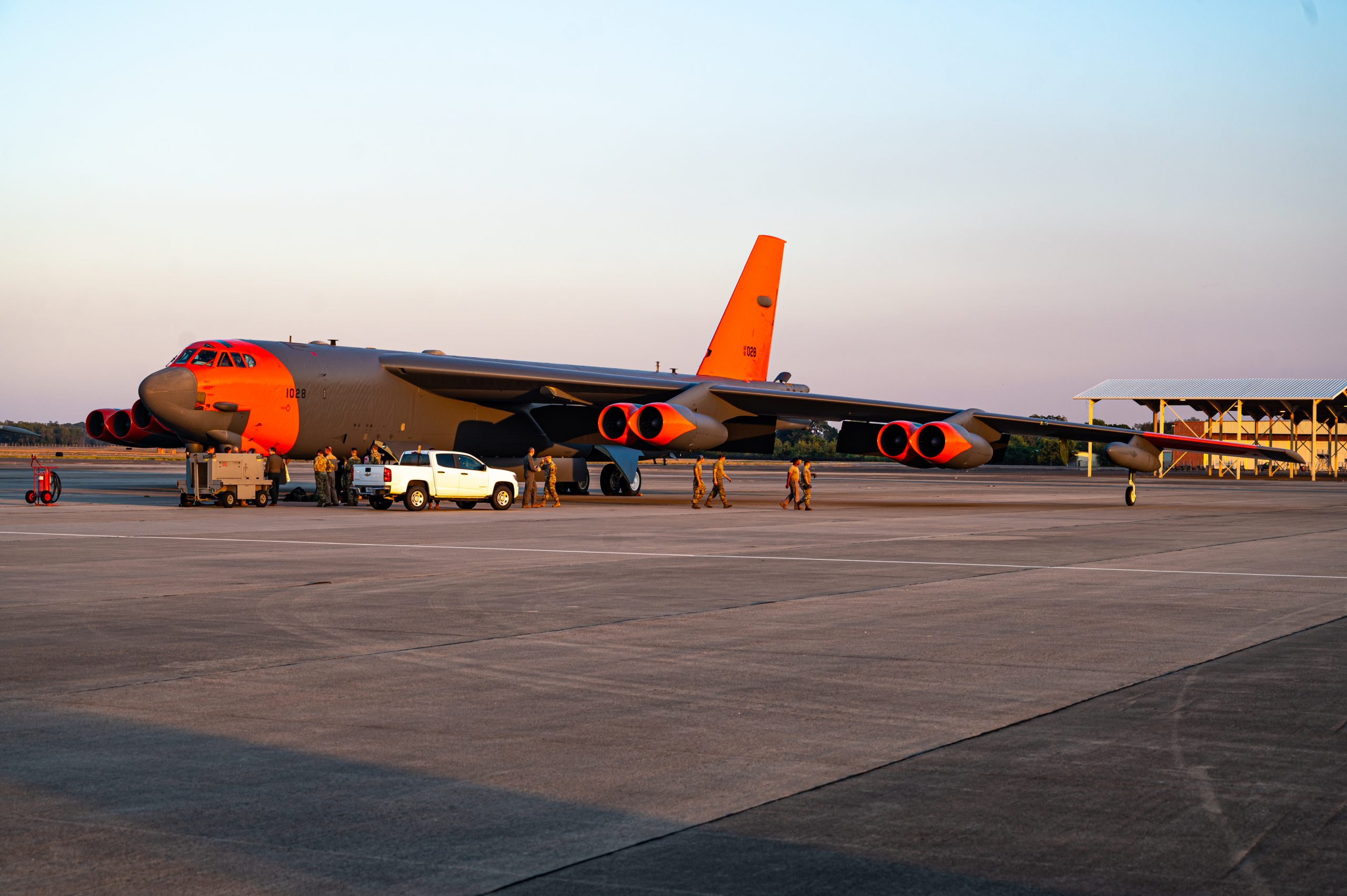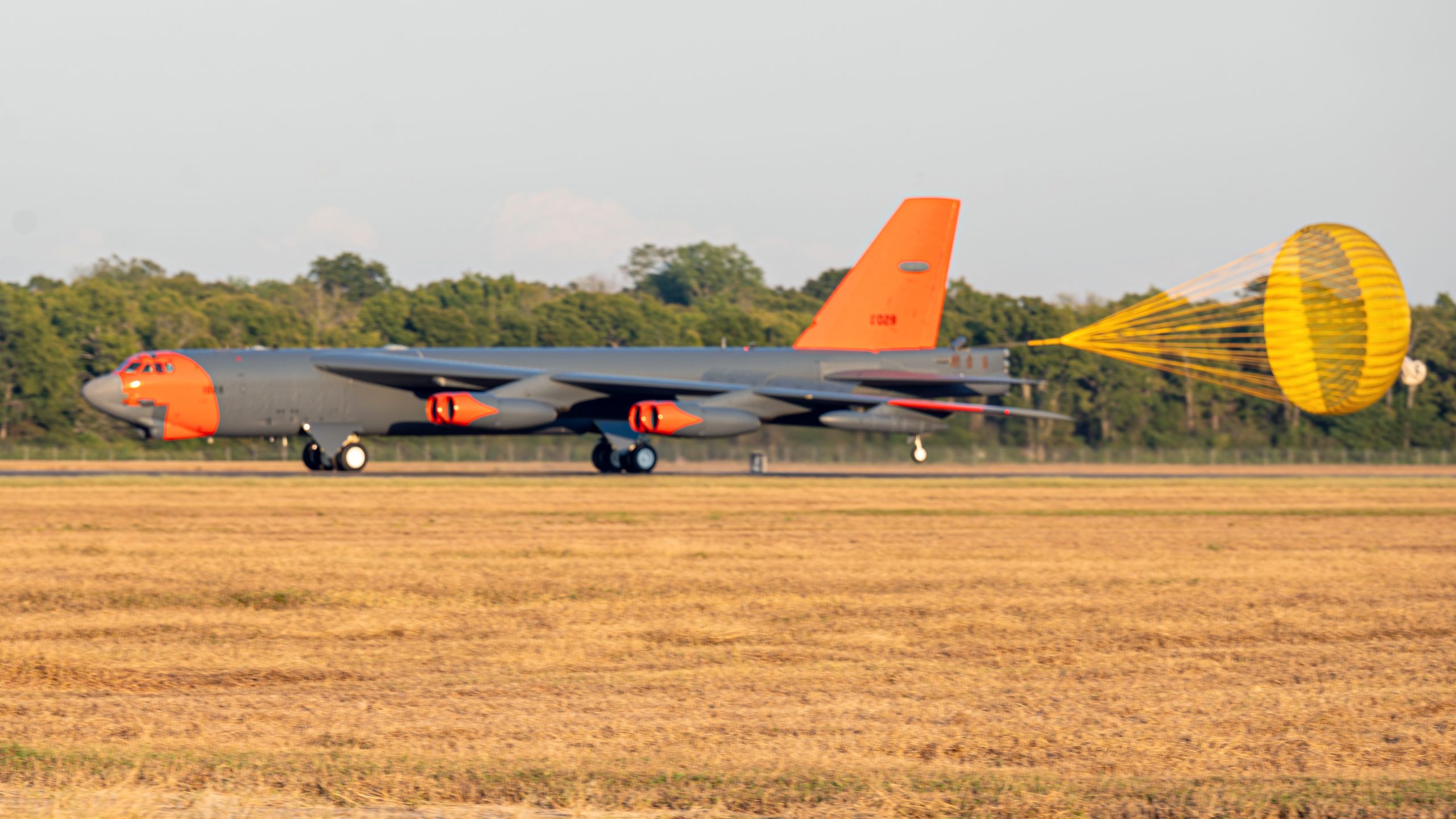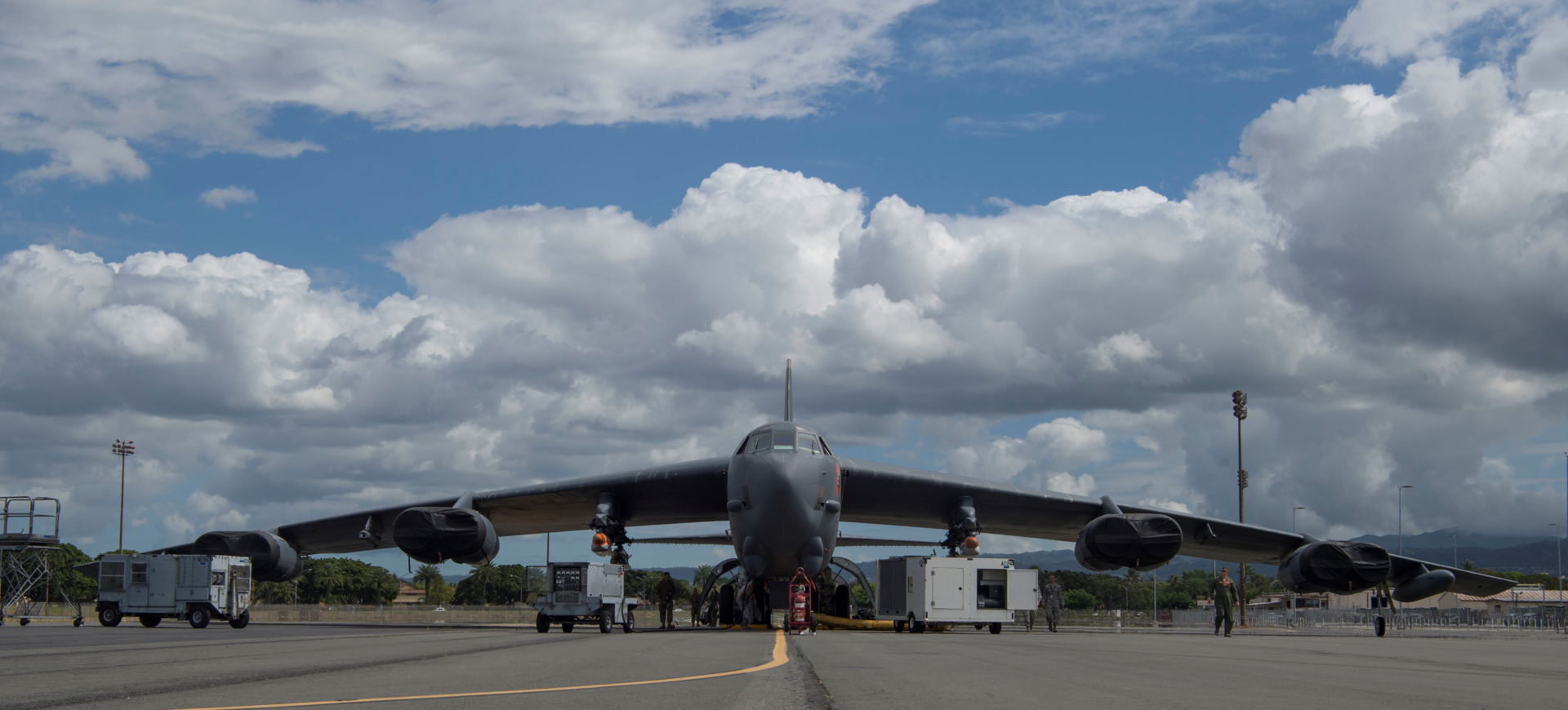ABILENE, TX — An amateur photographer recently captured images of a unique B-52H Stratofortress at an altitude of around 18,000 feet. According to an online flight tracker, this particular "Buff," as B-52s are nicknamed, was flying eastward toward its home base, Barksdale Air Force Base in Bossier City, Louisiana.
The B-52 spotted north of Abilene on October 28 sported a distinctive paint scheme with orange accents on its nose, tail, wingtips, and each of its eight engine nacelles. U.S. Air Force officials confirmed this aircraft as tail number 60-028, or "balls 28" among its aircrew. This B-52H, an H-model in service since 1960, had recently completed depot maintenance at Tinker Air Force Base near Oklahoma City, Oklahoma. The striking “test orange” paint commemorates the B-52's legacy as a test bed for new weaponry and aerospace technology dating back to the 1950s.
Assigned to the 49th Test and Evaluation Squadron at Barksdale, 60-028’s primary role is to test various weapons systems, including the Conventional Air-Launched Cruise Missile (CALCM) and Joint Direct Attack Munitions (JDAM). Known as "Wolfpack," the aircraft’s orange markings honor the legacy of test and evaluation flights conducted by the Buff over the last half century.



B-52H Stratofortress with a special orange paint scheme as it begins to slow down after landing at Barksdale Air Force Base, La., Sept. 30, 2024. (U.S. Air Force photo by Airman 1st Class Aaron Hill)
It’s not unusual to see B-52s from Barksdale over west Texas. Aerial Refueling Track AR-104, which passes over San Angelo, is commonly used for aerial refueling training flights. In addition, low-level route IR-178, which begins near Hudspeth and runs through the Big Bend area, is used for bomber navigation and simulated bombing practice. Landmarks like Santiago Peak in Brewster County help crews train on radar navigation and threat avoidance. A bridge on Interstate 10, east of Marathon, serves as a simulated target.
While low-level B-52 training has become rare due to advances in weapons systems and the increasing age of these bombers, the Buff remains central to U.S. airpower. The last known combat mission with a B-52 at a low level—200 feet altitude—was up and until the fourth night of Operation Desert Storm in 1991. Bombing missions have since been flown at high altitude as GPS and other guidance systems on 2000-pound bombs like the JDAM, for example, have markedly improved high level bombing accuracy.
With new engines in development, the B-52H models will eventually be upgraded to B-52J or J-models, ensuring their service beyond 2050. Perhaps 60-028, "Wolfpack," will be among these modernized bombers.
The author flew B-52 missions as an instructor pilot with the 11th Combat Crew Training Squadron at Barksdale AFB in the late 1990s and early 2000s.

The regular paint scheme of the B-52H is dark gray. This B-52H Stratofortress, 49th Test and Evaluation Squadron is carrying Quickstrike-ER (QS-ER) Naval Mines and was pictured at Joint Base Pearl Harbor-Hickam, Hawaii, 28 May 2019.
Subscribe to the LIVE! Daily
Required






Post a comment to this article here: